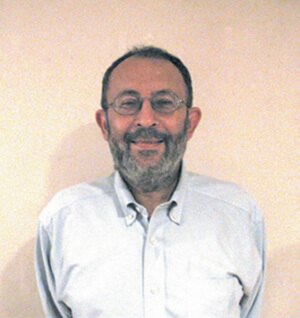
At the splitting of the Yam Suf, the root that the Torah uses to refer to the splitting is bet-kof-ayin. See Exodus 14:21: “va-yivaku ha-mayim.” This is also the root used at 14:16. Later in Tanach, this root is used as well. See Neh. 9:11 (ve-ha-yam bakata lifneihem), Isa. 63:12 (bokea mayim mi-peneihem) and Tehillim 78:13 (baka yam va-ya’avirem).
So why then, in early rabbinic literature (e.g., Babylonian and Jerusalem Talmuds, Mechilta and Sifri) did some Tannaim and Amoraim begin to use the root K-R-A? See e.g., Sotah 2a: “Matchmaking is as difficult as kriyat yam suf.” See also Pes. 118a (man’s attempts at parnassah).
Our question is strengthened by the fact that K-R-A is used many times in Tanach, but never in connection with water. Moreover, when the Jordan River is separated (Joshua 3:13), the root used is caf-resh-tet.
Of course, there was not a legislated change in terminology. Most likely, the use of K-R-A started with statements by a few Sages and then spread. Eventually, the new terminology evolved into the predominant verb used in connection with the splitting of the sea. A “sea change” occurred! But the question remains why such a change would have begun to occur.
(Of course, we can still find Rishonim who referred to “bekiyat yam suf.” See, e.g., Ibn Ezra to Isa. 51:10 and Radak to Hab. 3:8. Also, in our daily prayers, we sometime still use B-K-A, e.g., “bokea yam lifnei Moshe.”)
The simplest explanation for the change in the verb used would be that by the time of rabbinic Hebrew, the root B-K-A was no longer used in connection with splitting water. Perhaps it was used mostly in the context of trees, wood and metals.
Of course, the above is only a theory and needs to be documented.
Here are some of the other suggestions that have been made:
-The root K-R-A reminds one of mourning, where kriyah is required. The choice of the root K-R-A in connection with the splitting of the sea was to remind us to be sad about the death of the Egyptians.
-The root B-K-A implies splitting something with an instrument, while K-R-A implies splitting something with the hands. In verse 14:21, the implication was that God used the wind to split the sea. But later K-R-A was chosen to help extol God’s power a bit more.
-The root B-K-A implies something that was split from the inside out, while the root K-R-A implies that the item was cut by an outside force. From God’s point of view, the sea perhaps split from the inside out, since He commanded it to split and it listened to him. But from the perspective of the Israelites, the sea did not appear to split on its own. Rather, we look at the sea as having split because God came from the outside and split it on our behalf.
-The root K-R-A refers to tearing something that is soft and can easily be torn. The root K-R-A was chosen to emphasize that, vis a vis God, tearing the sea was no great feat because He can do everything.
Finally, I will add that the Gerrer Rebbe (1799-1866) was asked this question. He gave a homiletical answer to explain K-R-A, and added that he had much more to say but that he was stopped from Above from giving a full answer! (I will take that as my cue not to make any more suggestions either!)
Additional Notes
- Tehillim 136:13 describes the sea splitting with a different root, G-Z-R (“le-gozer yam suf le-gezarim”). Perhaps the Sages avoided this root because in rabbinic Hebrew it was often used to mean “decree.” In the Tanach itself, it meant “cut” and only two times did it mean “decree.” See Esther 2:1 and Job 22:28. (As to how a word for “cut” evolved into a word for “decree,” I discussed this in a prior column.) (As to why G-Z-R was used at Tehillim 136:13, see the interesting suggestion of Rabbi S.R. Hirsch.)
- In our daily prayer Ezrat Avoteinu we recite “ve-yam suf bakata,” while the Siddur of R. Saadiah Gaon (10th cent.) has “yam suf karata”!
- A similar question arises regarding the blessing for the “taking” of the lulav. The verb used in the Bible for the commandment is L-K-Ch. (See Lev. 23:40: “u-lekachtem.”). Yet when the Sages formulated the blessing, the verb they chose was N-T-L (“al netilat lulav”). Why the change? Here there is an easy explanation. By the time of rabbinic Hebrew, the verb L-K-Ch had expanded in meaning to also include the “purchase” of an item. If the enacted blessing would have been “al lekichat lulav,” many would have erroneously thought that the commandment required a purchase.
Acknowledgements: In writing this article, I relied significantly on two articles that can be found on the internet: 1) Michael Hoenig, Esq., “What Is the Real Source for the Term ‘Krias’ Yam Suf?” (2005), and 2) Rabbi Reuven Chaim Klein, “Pesach: Cutting Open the Red Sea” (2019).
By Mitchell First
Mitchell First is a personal injury attorney and Jewish history scholar. He can be reached at MFirstAtty@aol.com. He is very good at making distinctions and splitting hairs.
For more articles by Mitchell First, and information on his books, please visit his website at rootsandrituals.org.









